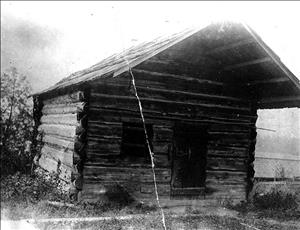On October 13, 1869, Erhart Seifried (1832-1899) files a claim under the Homestead Act for 131.66 timbered acres on Green Lake in the present-day (1999) north Seattle neighborhood of Green Lake. Seifried, known as Green Lake John, becomes the first white settler to occupy land on Green Lake. He arrives as an unmarried German immigrant, age 37.
From 1868 to 1873, 21 individuals filed claims to the four sections (four square miles) of Township 25 North containing Green Lake. Though not the first to file, Erhard Seifried was the first settler to lay foot on his claim.
Green Lake John
Green Lake John, as his neighbors called him, was an unmarried, 37-year-old German immigrant who came to Seattle on the heels of a brief mining career in Montana. Like many immigrants of his day, he reached the Pacific Northwest via stops along the way. Once here, he tried his hand at farming. Clearing land, building a shelter, planting an orchard, and raising crops and livestock was a lot for a man to do alone, and he soon married Eltien, also a German immigrant.
Seifried built the first cabin ever erected on the shores of Green Lake. It remained the only cabin for 10 years. By 1877 he had cleared five or six acres. He worked for Thomas Mercer, who operated a farm at the south end of Lake Union. According to an article in the Seattle Post-Intelligencer of 1909, Siefried would get to his claim by following the "old telegraph road" through Woodland Park and "paddle across the lake in his canoe to the little hut in which he lived while building his home."
"Green Lake John" and later his wife Eltien mingled with Indians who had known the area for generations. The couple cleared a dense stand of trees and planted an orchard.
Their Property on the Land
On December 14, 1887, they sold their entire holdings to the firm of Calkins, Moore, and Wood, for $15,000. The terms of sale reveal the couple's activity on the land. Sold with the land were:
- one bay horse, about three years old;
- one bay mare about nine years old;
- one farm wagon;
- nine cows, four heifers, and one calf;
- one bull;
- three dozen chickens;
- harness;
- mowers, rakes, and plows;
- dairy utensils,
- cider mill;
- all other farming implements and tools now situated upon the above described premises.
The acreage value itself was determined by its proximity to Green Lake and the Ravenna Creek outlet. Along the shoreline south of the outlet, near the present-day (1999) Albertsons grocery store, the acreage was valued at $250 per acre; to the north at $200. Value of acreage extending farther east was $150 and $50 per acre.

